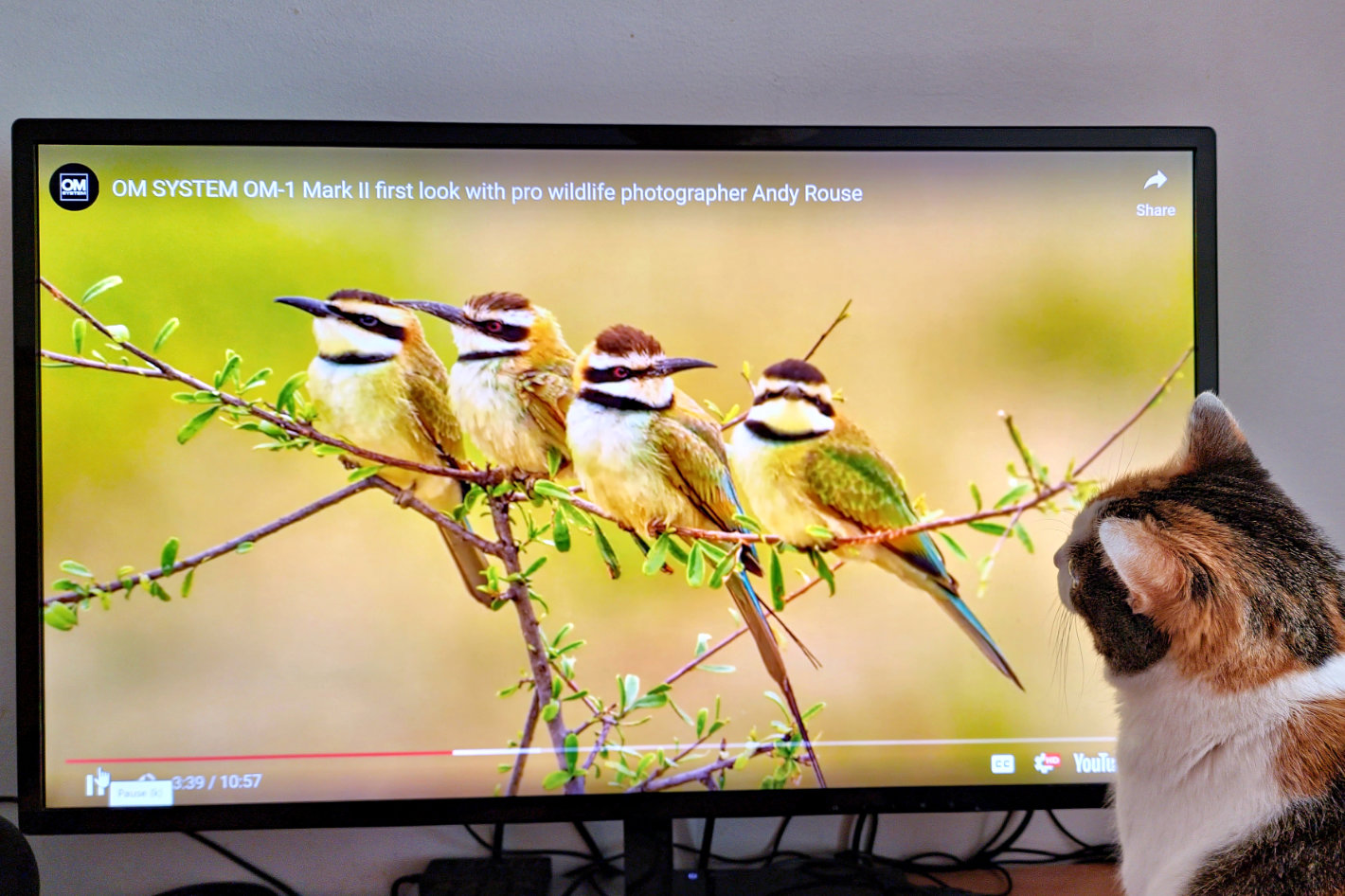
The second camera introduced by OM Systems since the company acquired the camera business from Olympus, the OM-1 Mark II is not a whole new camera, as it uses the same 20MP Micro Four Thirds sensor, which uses a BSI Stacked CMOS sensor, and the same OLED Electronic Viewfinder as the OM-1, lanuched in 2022, meaning the core specifications of the camera remain the same.
To put it simply, the OM-1 Mark II is an OM-1 with the addition of a Live Graduated ND function. Yes, the camera is the first in the world to offer a graduated ND filter that allows you to get similar results to those you would get if you carried a whole series of filters.
In fact, the OM-1 Mark II features neutral density filters – the graduated type, ideal for outdoor and landscape photography… or video – with values of GND2/GND4/GND8 (1, 2 and 3EV) and it also offers soft, medium and hard filter type settings to replicate the effects of using a half ND, accurately controlling brightness and darkness within the image being created. And as the “Live” term indicates, it is possible to see in real time, in the display, the effect of ech filter chosen. Just as if you placed the filter in front of the lens.
Here is what OM Systems says about the system: This innovative approach allows for precise customization of the effect’s position and angle, empowering photographers to craft their envisioned images effortlessly. Without the need for physical filters attached to the lens, this feature enables photographers to leverage half ND effects, even with lenses lacking filter threads, significantly expanding creative expression in genres such as landscape photography.
The Live Graduated ND function is, at least on paper, a real blessing, as it means you do not need to carry neutral density graduated filters with you, as well as adapters to use them with different lenses. It also makes it easier, again, in theory at least, to change filter types and the intensity of the effect, which is good, especially in landscape photography, where every minute counts when creating some images. But this, as OM Systems puts it, “ground-breaking feature harnesses computational photography” is not the only new feature offered by the OM-1 Mark II.
Elevating capabilities further, the OM-1 Mark II enhances the upper limit for step numbers in the popular Live ND shooting to ND128, allowing the camera to handle scenarios requiring larger step numbers. Now, there are also other areas where the OM-1 Mark II introduces changes, from the AI Detection AF, developed using deep learning technologies, which recognizes a wide spectrum of subjects, including birds, animals, cars and more, and now includes humans, enhancing autofocusing for exceptional clarity, even under the most challenging conditions.
Elevating high-speed shooting performance, the OM-1 Mark II’s enhanced memory allows for an increased number of sequential shots. OM Systems notes that “equipped with expanded buffer memory, the OM SYSTEM OM-1 Mark II allows retrospective capture of approximately 99 in Pro Capture mode – an increase from the predecessor OM-1’s 70 frames. In sequential shooting, the OM-1 Mark II can capture approximately 219 frames in JPEG format or 213 frames in RAW shooting at approximately 120 fps, a dramatic improvement in high-speed shooting capability from the OM-1’s approximately 92 frames each.”
From improved grip surfaces and rubber dials that improve handling to vertical video support, the OM-1 Mark II caters to user comfort and convenience. Additionally, it supports UVC/UAC connections to PCs for webcam use, catering to modern connectivity needs and an intuitive experience. Improved IBIS, now up to 8.5 steps (a 20% improvement) will appeal to those shooting video, although it is hard to believe the new camera will attract anyone – but OM shooters – for its video capabilities, especially with a price close to $2,400.
In the end I picked the videos from photographer Andy Rouse – whom I know from nearly two decades ago, and moved since then from Canon to Olympus – promoting the new camera (and a lens), for one good reason: although I checked other videos, those from Andy Rouse in Kenya attracted my calico cat, Ariel. She sat in front of the screen, trying to touch the birds in some of the photos shown, or looking surprised at other animals, as well as following Andy Rouse’s gestures while talking. This suggests that the results from the OM-1 Mark II are good enough to grab a cat’s attention. Or maybe it’s the birds…
